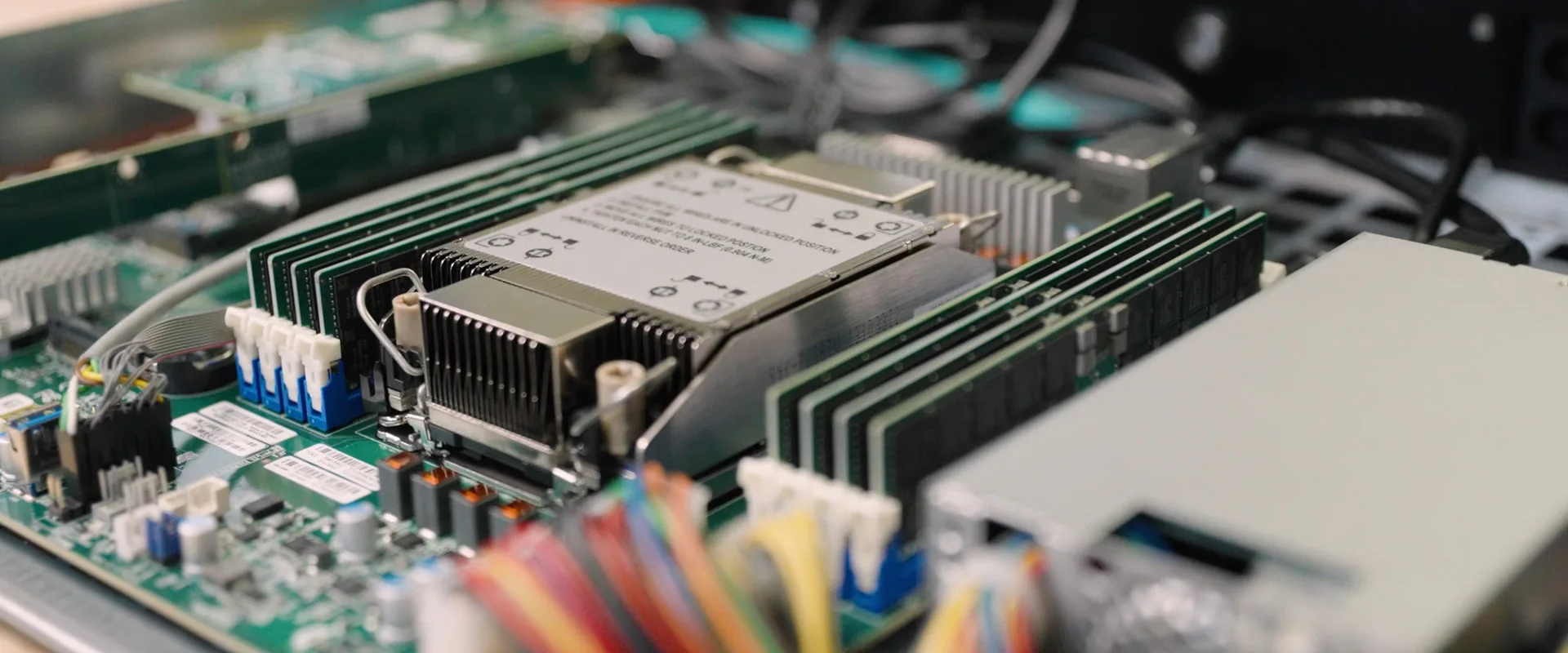The rapid growth of AI workloads and high-performance computing (HPC) is placing increasing demands on data centers. Applications such as deep learning, generative AI, and complex simulations in scientific and industrial research require ever more computing power and generate significant heat.
As a result, immersion cooling and liquid cooling are increasingly being used as efficient and sustainable cooling methods.
Why AI and HPC require new cooling technologies
The complexity and scale of AI and HPC models are rapidly increasing. This leads to higher thermal loads, making cooling a crucial factor in infrastructure performance and reliability.
- High heat generation from intensive computations: AI workloads can generate up to 10 times more heat than traditional servers, requiring enhanced cooling solutions.
- Growing energy consumption due to powerful hardware: AI models run on specialized hardware such as NVIDIA’s DGX B200 and Google’s TPUs, which can each produce up to 700W of heat.
- Sustained high loads with intense peaks: AI training and HPC simulations require prolonged high-intensity computing, with sudden spikes when processing large datasets.
These developments make air cooling less effective. Immersion cooling and liquid cooling offer more efficient heat dissipation, ensuring that AI models and HPC workloads maintain optimal performance.
Immersion cooling: optimal heat dissipation for AI workloads
With immersion cooling, servers are fully submerged in a non-conductive liquid. This method removes heat far more efficiently than air cooling, keeping temperatures stable and allowing hardware to run at peak performance for extended periods.
Advantages of immersion cooling for AI and HPC
- Higher computing density per rack: More hardware can be housed per square meter without overheating risks.
- Optimal performance without throttling: AI chips stay within the desired temperature range and continue operating at full speed without heat-induced slowdowns.
- More energy-efficient cooling: Heat dissipation through liquid is significantly more effective than air, leading to lower energy consumption.
- Suitable for waste heat reuse: Excess heat can be repurposed, for example, in district heating systems like NorthC’s upcoming waste heat project in Rotterdam Zestienhoven.
Liquid cooling: direct cooling for AI and HPC hardware
Liquid cooling is another method where coolant circulates through plates and piping to directly remove heat from critical components such as CPUs and GPUs. This can be used on its own or in combination with other cooling techniques.
Advantages of liquid cooling for AI and HPC
- Direct heat removal at the source: Cooling is applied directly to CPUs and GPUs, preventing overheating and performance throttling.
- Compatible with existing IT infrastructure: It can be integrated into conventional server environments without major modifications.
- Flexible deployment: Liquid cooling can be used alongside air cooling or immersion cooling.
- Lower energy consumption: More efficient cooling reduces power usage, contributing to lower operational costs.
What is the difference between liquid cooling and immersion cooling?
While both technologies use liquid instead of air to remove heat, they differ in implementation and efficiency.
Immersion Cooling
- Cooling method: Servers are fully submerged in a non-conductive liquid, allowing direct and uniform heat dissipation.
- Integration: Requires a redesign of infrastructure.
- Efficiency: It provides highly effective heat removal, particularly in two-phase systems, where heat absorption and release happen almost instantly.
- Maintenance: Can be more complex, as hardware must be removed from the liquid for inspection or repairs.
Liquid Cooling
- Cooling method: Liquid circulates through piping and cooling plates to remove heat directly from components like CPUs and GPUs.
- Integration: It can be incorporated into existing server architectures with minimal adjustments.
- Efficiency: More effective than air cooling, but performance depends on pump quality, fluid selection, and heat exchanger design.
- Maintenance: Requires regular checks to prevent leaks and maintain efficiency.
The future of sustainable and efficient AI data centers
AI and HPC workloads continue to push the limits of data center cooling. While air cooling is still common, the increasing power density of AI hardware demands more efficient solutions. Immersion cooling and liquid cooling deliver improved performance, energy savings, and a more sustainable infrastructure.
At NorthC, we are actively preparing our data centers for these advancements. A strong example is our Rotterdam region, where we are proactively expanding and investing in AI-ready facilities. With scalable capacity and advanced cooling technologies, we provide organizations with the space and flexibility to grow.
